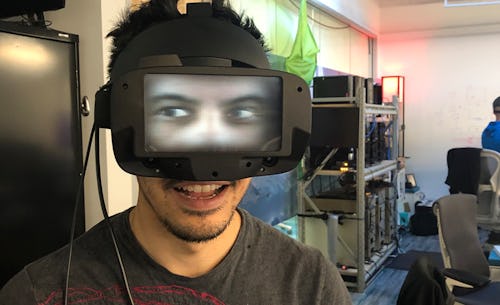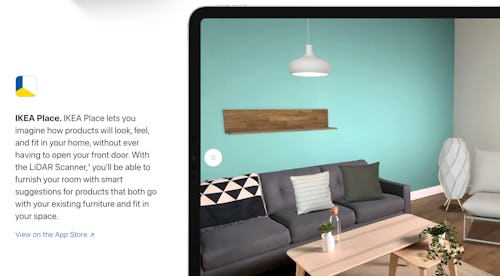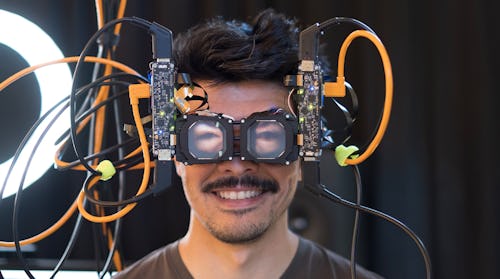
Jony Ive and Apple’s team of industrial designers reportedly wanted the company’s long-rumored mixed reality headset to feature outward-facing screens, The Information reports.
Apple’s engineers hoped to show a users’ eyes and face while wearing the headset to better deal with “VR-induced alienation,” just one of several trials and tribulations the report covers in detail.
Closed-off —
The concerns have merit. Strapping screens and cameras to your face naturally creates separation from the world around you. As The Information writes, Ive and his team also thought VR headsets “made users look unfashionable and lacked practical uses.” I mean they aren’t wrong! Outward-facing screens would ultimately change things for Ive and his team, according the report. The implementation described sounds like what’s now commonly known as “reverse passthrough.”

Standalone VR headsets already use video passthrough to show the world around you as both a safety feature and to enable limited mixed reality experiences. Meta’s even betting big on the usefulness of high-quality video passthrough for its upcoming Cambria headset. Reverse passthrough, detailed in a research blog from Meta last year, inverts the idea. Rather than show you what’s going on in the world outside the VR helmet, reverse passthrough lets people on the outside see what’s going on in your headset — with somewhat horrifying results.

Alternate history —
Apple’s work in VR and AR, at least according to The Information, is a bit like an alternate, private history of the entire VR industry. The company’s internal team, led by former Dolby Laboratories executive Mike Rockwell, explored multiple ideas that have been previously shared more publicly by companies like HTC, Meta, and Google.
Apple reportedly wanted to release a Google Cardboard-esque VR headset that would use an iPhone as its screen after the launch of the iPhone 11 in 2019, but backed down because of technical issues like “poor tracking of head movements.” The company also worked on alternative control methods, including a finger clip “which mimicked the physical feedback of typing on a virtual keyboard by applying pressure to a person’s finger.”
Ultimately, Apple ended up dealing with the same inherent problems that everyone who wants to make AR or VR headsets does: battery life and whether anyone would want to wear a headset for an extended period of time in the first place. It’s not clear where the company has finally landed, and with most recent reports suggesting Apple might not reveal it’s headset until 2023, we might have longer to wait until we find out.







